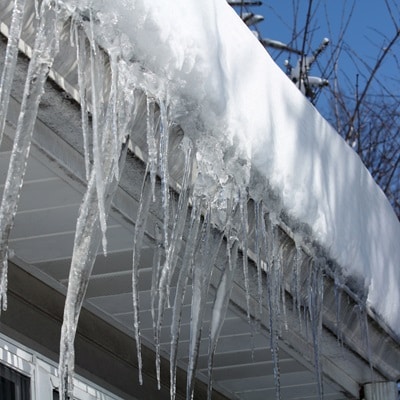Winterize Your Home

Winterize Your Home: Preparing for Cold Weather
Even though it’s still technically fall and temperatures have been mild, winter weather will arrive sooner than you think. It’s not too late to winterize your home and prepare for the cold and snow. While it may seem overwhelming, taking proactive steps can make the transition smoother. By creating a solid home winterization plan, you can save time, money, and stress as the temperatures drop. Below are essential steps to winterize your home and ensure it's ready for the winter season.
Gutter Care
One of the most important tasks when you winterize your home is taking care of your gutters. Clean them thoroughly in mid-fall to remove leaves, twigs, and other debris that can cause clogs. Before winter fully sets in, double-check your gutters to ensure they're still clear and free of obstructions. Clogged gutters can lead to ice dams, which may damage your roof or walls. To make maintenance easier in the future, consider installing leaf guards. These guards prevent debris from accumulating in your freshly cleared gutters, reducing the risk of backups when snow starts to melt.
Doors and Windows
Drafty doors and windows are major sources of heat loss, increasing your energy bills during winter. As part of your winterization, check all windows and doors for gaps where warm air can escape. Use caulking to seal cracks and apply weatherstripping around drafty areas. These simple fixes will help keep the heat inside and reduce the load on your heating system. If your home has older, single-pane windows, consider upgrading to double-paned windows, which provide better insulation and improve energy efficiency during the cold months.
Chimney, Roof, and Deck Care
As you winterize your home, don’t forget your chimney, roof, and deck. Make sure to clean chimneys and wood stoves before using them. A professional chimney sweep can ensure your chimney is free of creosote buildup, which can cause dangerous chimney fires. Hire a roofer to inspect your roof for any damaged or missing shingles and to check your gutters for any wear or damage. Addressing these issues now prevents costly leaks or structural damage during snowstorms. If you have a deck, apply a protective sealant to prevent moisture from snow and ice from seeping into the wood, which can cause warping or cracking.
Heating System Preparation
Before you need your heating system, it’s essential to ensure it’s working efficiently. Replace your furnace filter to improve air quality and airflow. It’s a good idea to hire a heating professional to inspect your furnace and test its efficiency. An annual check-up can catch small issues before they become costly repairs or cause a breakdown in the middle of winter. Run a test of your heating system now to ensure it's functioning properly before the weather turns cold. This is a critical step when you winterize your home, as it guarantees warmth when you need it most.
Stock Up on Supplies
Prepare for potential winter emergencies by stocking up on essential supplies. Make sure you have a sturdy snow shovel and a good supply of salt or ice melt for your driveway and walkways. It’s also wise to keep extra canned food, bottled water, and flashlights on hand in case of a power outage or heavy snowstorm. Winterizing your home isn’t just about the physical property—it’s about making sure you and your family are ready for any weather-related challenges.
Final Thoughts
Winterizing your home doesn’t have to be stressful. By taking care of these tasks in the fall, you can ensure your home is well-prepared for winter. From clearing your gutters to inspecting your heating system, every small step helps. Start now, and you’ll thank yourself when the snow arrives!
